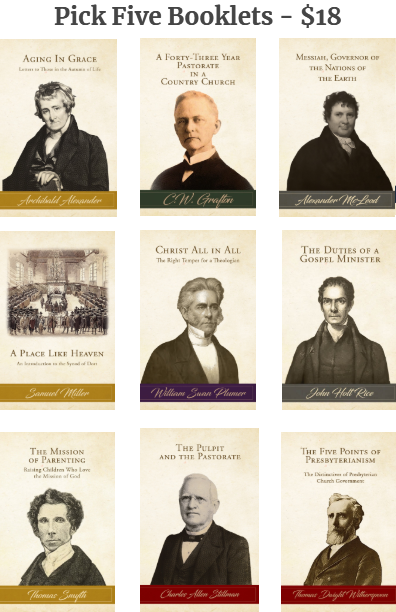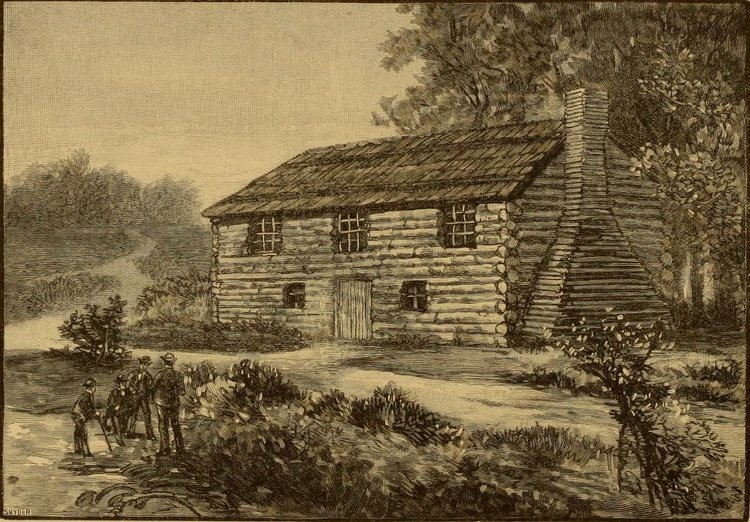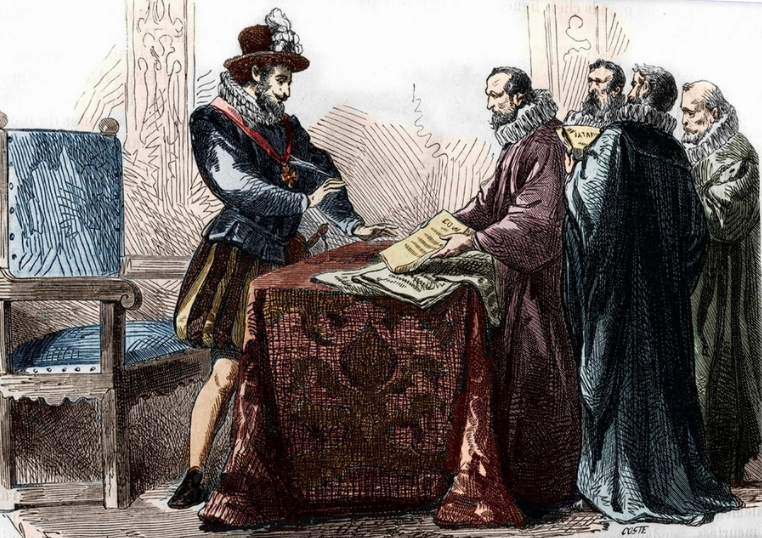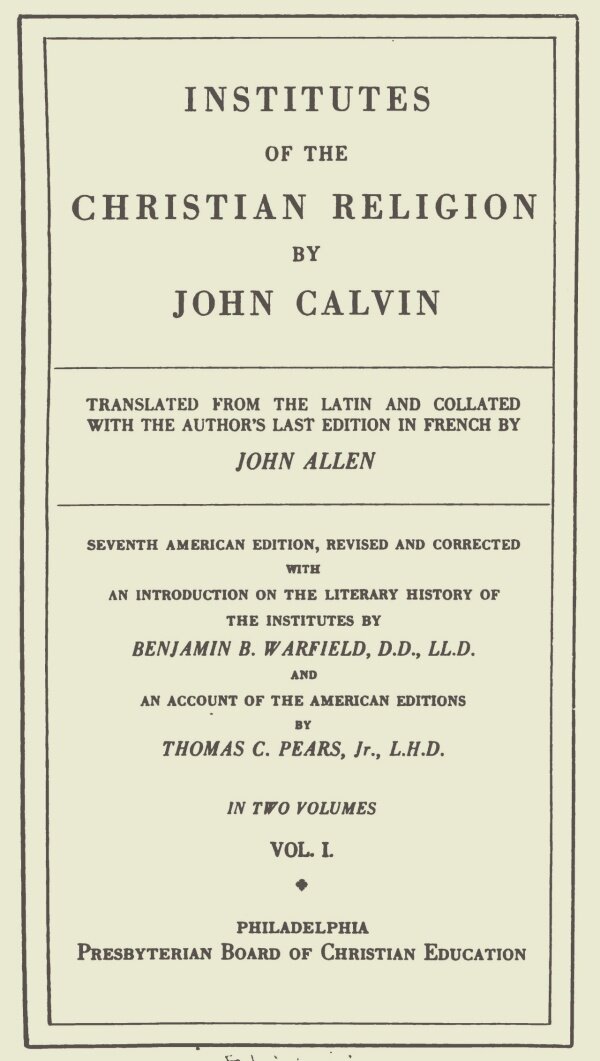He is a favorite theologian of this writer, and so, it was with a sense of empathy that I recently read about Clifford M. Drury’s journey to trace the steps of a beloved minister, William Anderson Scott. The extract below comes Drury’s 1967 biography titled William Andrew Scott: “No Ordinary Man” [see our secondary sources page], pp. 339-343.
Dr. Morton H. Smith once wrote a review of this volume in which he states:
And as the reader hears Dr. Drury below tell the story of his personal experience in re-tracing the steps of a most fascinating figure in American Presbyterian church history, one will take of how history became alive for him, and as Dr. Smith and Dr. Cropp note, alive for the modern reader as well.
On top of the hill on the campus of San Francisco Theological Seminary in San Anselmo, California, is cut stone castle-like building whose gray walls and round tower are covered with ivy. On a certain morning during the last week of September 1919, a new student at the seminary stood before this building. After reading the inscription over the arched entrance, he asked: “Why is this called Scott Library Hall?” He was told: “After Dr. William Anderson Scott who founded this seminary in San Francisco about fifty years ago. This building was erected as a memorial to him.” I was that new student and that was the first time I had ever heard of Dr. Scott.
Since Dr. Scott had died in 1895, there were still living in 1919 a number of people who remembered him. Among them was Arthur W. Foster, a prominent Marin County business man, a trustee of the seminary, and since he had married Louisiana Scott, he was also a son-in-law of the founder. In 1889 Foster had given the seventeen-acre campus in San Anselmo to the Seminary. He was a frequent campus visitor when I was a student and I have vivid memories of his portly figure usually clad in a Prince Albert coat. His silk hat and gold-headed cane made him an impressive figure in my eyes. Mrs. Foster, who often accompanied her husband to the campus, laid the cornerstone of the library building dedicated to the memory of her father on October 17, 1891. There were others whom I came to know who also had memories of the unusual person whose biography I have undertaken to write.
After my graduation from the seminary in 1922, I served for more than fifteen years in several pastorates and then returned to my alma mater in 1938 as a member of the faculty. As Professor of Church History, it was both my duty and my pleasure to delve into the history of Christianity on the Pacific Coast. One day in the basement of Scott Hall I came across three large chests filled with Dr. Scott’s manuscripts. The contents of these chests had previously been damaged by water as the result of a fire in the Foster home. Water poured upon the fire had settled in the basement and had innundated the chests. After the water had drained away, the contents of the chests gradually dried out, but most of the papers were damaged beyond use. After the lapse of many years, the chests were sent to the seminary and stored in the basement of Scott Hall where I found them. Among the papers still readable was Scott’s diary for 1836, several important addresses, some early sermons, and many lectures.
Then came World War II. After serving for five years as a chaplain in the United States Navy, I returned to the campus in 1946 and returned to my attention to Dr. Scott with the hope of some day writing his biography. I began a systematic examination of the large collection of Scott papers which members of the family had given to Bancroft Library, University of California, in Berkeley. This collection contains about nine hundred letters which Scott received or wrote during the years 1832-85; diaries, journals, and record books; hundreds of newspaper clippings dealing largely with controversies in which he was involved; pictures and many other exceedingly rich in detail. No one had ever made a serious study of this bonanza of biographical data.
During the years that followed, sometimes by visits and again by correspondence, I probed into historical collections and libraries scattered throughout the nation for further information about Dr. Scott’s life and work. In the library of the State University of Louisiana at Baton Rouge, important material was located which dealt with the Clay controversy of 1844-47. Original Scott letters were located in the Library of Congress, the Presbyterian Historical Society in Philadelphia, in Princeton Theological Seminary, and in Huntington Library, San Marion, California. The extensive collection of original records of various Presbyterian judicatories on the Pacific Coast, on deposit at San Francisco Theological Seminary, contains a wealth of information dealing with Dr. Scott’s activities in California during the years 1854-85. I also had access to the original records of the two Presbyterian churches he founded in San Francisco, Calvary and St. John’s. Added to these were the original records of the seminary of which he was the chief founder.
Among the important sources of California church history owned by the seminary is the editor’s file of the Pacific for the years under review. This was a New School Presbyterian and Congregational weekly founded in San Francisco in August 1851. The seminary also has the only complete file extant of the Occident, a Presbyterian weekly published in San Francisco 1868-1900. I compiled a page by page index of the Pacific from 1851-69 and of the complete file of the Occident. These indices, consisting of thousands of cards, provided by the magic key which unlocked the hidden historical treasures of these important California church periodicals. The columns of the Pacific for the years of Dr. Scott’s first residence in San Francisco, 1856-61, reveal the unpleasant story of ecclesiastical jealousies within Presbyterian and Congregational circles which contributed much to the series of unhappy events connected with Dr. Scott’s ministry in Calvary Church. Much light is thrown upon the vigilante movement in San Francisco, which Dr. Scott had the courage to oppose, and also upon the conflicting emotions and prejudices which stirred California in the events leading up to the Civil War.
After Dr. Scott was forced to leave California in 1861, he and his family spent two years in France and England. In the spring of 1956, I had opportunity to examine some original ecclesiastical records of the Presbyterian Church of England on deposit in its Historical Society in London. Some information was found therein regarding Dr. Scott’s work in London and Birmingham. After returning to the United States in the summer of 1863, Dr. Scott served as pastor of a Presbyterian church in New York City for six years. The original records were located in the library of Union Theological Seminary in that city.
Added to all that could be gleaned from such manuscript and published materials relating to this long neglected but important churchman, were the personal memories and family traditions. Perhaps the last individual to have personal recollections of both Dr. and Mrs. Scott, was Mrs. Mary F. Kuechler, a granddaughter, of Ross, California. She passed away on May 16, 1965. Stories about Dr. Scott are associated with a number of family heirlooms owned by several of his descendants.
In 1960, having completed some other projects which had priority, I began writing the preliminary sketches of this biography. I soon realized that a personal visit to the scenes connected with Dr. Scott’s youth and to the various parishes he served before going to California was essential. In order to make such an investigation, the seminary granted me sabbatic leave beginning January 1, 1962. The American Philosophical Society of Philadelphia made a grant of $600 for expenses connected with the basic research. On February 26th my wife and I left by automobile for a tour of the South which lasted ten weeks. We visited Dr. Scott’s parishes at Opelousas and New Orleans, Louisiana. He spent two years, 1834-36, in the former and twelve years, 1842-1854, in the latter. In New Orleans, he came to the fulness of his powers as a pulpit orator, and from here in 1858 Dr. Scott was elected Moderator of the Presbyterian Church, U.S.A., the highest honor within the power of his church to bestow.
We then visited Tuscaloosa, Alabama, where he had a two-year ministry, 1840-42. From there we proceeded to Montreat, North Carolina, where I had opportunity of consulting Presbyterian judicatory records and periodicals for the years immediately preceding the Civil War. Also at Montreat were the original records of the First Presbyterian Church of New Orleans covering the period that Dr. Scott served as pastor.
From Montreat we drove into eastern Tennessee, first visiting Winchester where Scott, as a young newly-wedded minister, served as principal of female academy and pastor of the Cumberland Presbyterian Church from 1836-38. From there we went to Nashville, passing within a few miles of his birthplace in Marshall County without then knowing its exact location. Scott served as principal of a female academy in Nashville from 1838-40 and also as stated supply of two small country churches. He alternated on week ends going to the Hermitage Church where General Andrew Jackson lived and to Harpeth. Each church was ten or twelve miles distant from Nashville but in different directions. In both places I found the original buildings still standing and had access to the original sessional records. The Scott Collection in Bancroft Library contains some letters from General Jackson to Scott. At Nashville I located the other half of the correspondence, the letters from Scott to Jackson.
We then drove to McKenzie, Tennessee, where the Cumberland Presbyterian Theological Seminary is located. Scott began his ministry in the Cumberland Church and did not transfer to the Presbyterian Church, U.S.A., until 1838. As a Cumberland Presbyterian circuit rider, when only eighteen years old, he spent a year on a circuit which included some thirty communities in northwestern Tennessee. McKenzie lies about in the center of that circuit. With Scott’s 1830 diary before me and with the help of Dr. Thomas Campbell, president of the seminary, we were able to locate many of the communities listed.
All along the way as we followed Scott’s trail, we found new material and much local color, sometimes in the most unexpected places. We met with a generous response from all to whom we turned for help, librarians, pastors, local historians, and just common folk who, when they heard of her quest, cooperated in many ways.
After returning to our home in San Rafael, California, in May 1962, I was able by correspondence to clear up many unsolved questions. By this means the place of Scott’s birth in Marshall County and the grave of his mother near Raleigh were located. Bit by bit, like the pieces of a jig-saw puzzle which had been scattered through 150 years and over half of the continent, the important facts relating to the life and work of Dr. Scott were assembled. Gradually a clearer picture of the boy, the student, the itinerant backwoods preacher, the educator, the orator, the author, and the churchman emerged.
As I sat before my typewriter writing this life of “no ordinary man,” I have had the feeling that Dr. Scott has been looking over my shoulder. Although the portrayal is designed to give a sympathetic interpretation of his life, yet I have not hesitated to record what appear to be personal weaknesses and errors of judgment. Dr. Scott himself would have been the first to deny any claim to perfection. The artist needs both light and shadow to sharpen the outlines of his picture. Most church members today would agree with his stand against the compulsory reading of the Protestant version of the Bible in public schools and with his opposition to the Vigilance Committee’s unlawful activities in San Francisco. They would disapprove, no doubt, his attitude toward slavery and his support of the Southern rebellion against the federal government. Dr. Scott was a Southerner by birth, education, and sympathies. He lived during those critical years preceding the Civil War when the Presbyterian Church was forging its philosophy of the relationship of the church to social issues in the hot fires of sectional controversy. Partly because of the leading role that Scott played in the national affairs of his denomination, he inevitably became a central figure in these discussions.
…
The story of William Anderson Scott is a vivid commentary on his time. His deep opposition to the Vigilance Committee, for instance, throws much light upon the lawlessness existing in San Francisco in the mid 1850s. In the events surrounding the second hanging of Dr. Scott in effigy before his church on Sunday morning, September 23, 1861, we see how deeply the issues which precipitated the Civil War stirred the citizens of San Francisco. Scott’s close connection with the national leaders of the Presbyterian Church had a direct bearing upon the unfortunate division which split the Old School Assembly of 1861 into the northern and southern branches. Here is a hitherto unexplored chapter in American Presbyterian history.
To recapitulate, the great wealth of source material including nearly nine hundred letters, diaries, journals, books, pamphlets, ecclesiastical records, hundreds of articles in religious and secular periodicals, sermon and lecture notes, together with family memories and personal observations has made this book possible. Herein we can become acquainted not only with what Dr. Scott did and what he said, but also with many of his inner thoughts and feelings. As we move with him through the years, we come to appreciate his problems and share with him his sacrifices and his sufferings. We enter into his dreams and aspirations and rejoice in his accomplishments. When the full story is told, we are amazed to see how one who emerged from such an unpromising backwoods environment, handicapped by a crippled foot, and with such a limited formal education, should have been able to do such.
The journey of a church historian to learn about his subject shows that the past is not dead, but very much alive, which is what we at Log College Press also believe. Get to know Clifford Merrill Drury and William Anderson Scott, among many others associated with American Presbyterianism, at Log College Press.





























